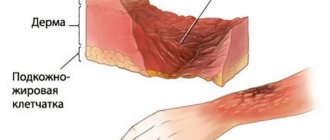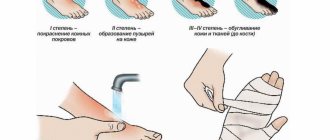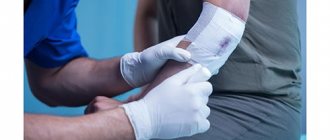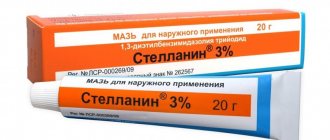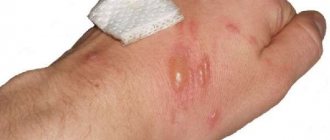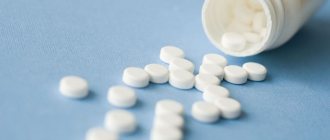July 20, 2021
Burns are one of the most common types of injuries in children and adults. Almost everyone has experienced a burn at some point in their life, particularly a thermal, chemical or solar burn.
Burns are one of the most common types of injuries in children and adults. Almost everyone has experienced a burn at some point in their life, such as a thermal, chemical or solar burn. Often minor burns can be treated with home remedies, but in other cases immediate medical attention is required.
In Russia, about 300 thousand cases of burn injury are registered annually (among those who sought medical help). Physical suffering, long-term disability, possible disability and mortality make this type of traumatic pathology the most relevant. With timely, reasonable, competent provision of first aid, it is possible not only to relieve the patient of pain, but also to prevent the development of complications, to create conditions for subsequent effective treatment and a speedy recovery.
There are several types of burns, including thermal, chemical, and even electrical and radiation. Thermal burns are the most common and account for more than 90% of all types. These are burns from flame, hot steam, hot or burning liquid, boiling water, burns from contact with hot objects, sunburn. The severity of burns is divided depending on the depth of skin damage.
With a 1st degree burn, only the upper layers of the skin are affected. Severe redness and swelling of the skin develop, and pain and a burning sensation are noted in the burned area. Symptoms subside within two days, and after a week complete recovery occurs.
With a 2nd degree burn, the top layer of skin completely dies and peels off, and in its place bubbles filled with a clear liquid form. If the course of the disease is not complicated by wound infection, healing occurs in 10-12 days.
With 3rd degree burns, the skin is affected almost to its entire depth. In this case, massive blisters with a thick shell are formed, filled with bloody contents, tense and very painful.
With a 4th degree burn, the most serious, there is complete death of all layers of the skin, even the deepest ones, including subcutaneous fat, as well as underlying tissues - muscles, tendons, bones. The above burns can affect limited (local) or large areas of the skin.
What are they and how do they manifest themselves?
- Thermal: flame, hot liquid and steam, heating radiators, hot water pipes and other hot objects.
- Chemical: acids and alkalis - often included in household chemicals.
- Electrical: lightning, current.
- Radiation: ultraviolet, radiation.
- Mixed: several factors from the above.
Almost all burns are thermal: damage to the skin, and sometimes mucous membranes, muscles and bones, as a result of exposure to high temperatures. They most often affect children, and in 95% of cases the cause is a flame.
According to Russian clinical guidelines, there are three degrees of depth of skin damage for thermal burns:
- Only the epidermis is the topmost layer. The skin turns red and swells. The pain is usually minor because the nerve endings are deeper. After 2-4 days, the dead epithelium sloughs off. There are no scars left.
- The epidermis and upper dermis is a layer rich in blood vessels and nerve endings between the epidermis and subcutaneous fat. In addition to redness and swelling, small blisters with cloudy or bloody contents appear - this is when the epidermis peels off and the void between it and the dermis is filled with blood and lymph. Second degree burns are very painful because the nerve endings are left without their protection - the epidermis. In 1-2 weeks, the lower layer of the dermis, closest to the subcutaneous fat, is renewed and the wound heals. Scars may remain if a large area of skin is affected.
- Full thickness skin, subcutaneous fat, muscles and bones. A dense brown or black crust forms over the burn, which “sticks together” with the tissues below. The blisters merge with each other, and ulcers then appear in their place. Pain occurs only at the time of injury. Then pressure or slight discomfort is felt, and there is no pain even when touching the wound - because all the receptors have died. When the dead tissue begins to be replaced by new tissue, pain appears again. Amputation of the burned limb and plastic surgery of defects may be required. Scars always remain.
Is it possible to lubricate burns with brilliant green and iodine?
Zelenka and iodine are the first things that come to mind when it comes to what to apply to burns. However, this should not be done; in rare cases, you can carefully apply a small amount only around the wound itself. Consequences of using iodine and brilliant green:
- chemical burn;
- pain;
- burning;
- blisters.
The action of iodine and brilliant green solutions only aggravates the resulting damage from boiling water. They also slow down the regeneration process in case of burns. These products should not be used by people with allergies.
Why does it hurt so much
The skin is the largest organ: 4−6% of the total body weight. It contains up to 82% water and a third of the total blood volume. There are 2 million nerve endings in the skin, 1.5 million of them are pain receptors.
Temperatures above 44 °C destroy skin proteins - the integrity of the cell membranes is disrupted and water from the cells goes into the space between them. This can be illustrated using an egg as an example. It contains approximately 73% water, 13% protein, 12% fat and minerals. When cooked, the proteins in the cell membrane are destroyed and folded - water comes out. The same thing happens to the skin, only the water goes into other tissues. Therefore, swelling occurs.
Then platelets stick together in the vessels of the dermis and clog the lumen. The blood supply to the burned area is reduced, which can lead to complete tissue death if help is not provided in time. A burn also leads to the release of substances into the blood that provoke inflammation.
Traditional recipes for the treatment of burns
For burns from boiling water, folk remedies are very popular due to the availability of ingredients and ease of use. Almost everything needed for the recipe can be found in any kitchen or local store. Using folk recipes, you can treat a 1st degree burn with boiling water or use it as additional therapy for more serious injuries.
In any case, herbal decoctions, homemade ointments and lotions do not replace drug treatment and you should consult a doctor before using them.
How to quickly cure a burn with boiling water using folk remedies at home:
- Wax-based oil ointment . To prepare this product you will need 50 ml of any vegetable oil, 40 g of natural wax and hard-boiled chicken yolk. To mix the ingredients, you will need to melt the wax, pour oil into it and only then add carefully crushed yolk. The mixture is shaken until a homogeneous consistency is obtained and allowed to cool. The ointment is stored in the refrigerator and used for compresses.
- Compress with wax and oil . To prepare the medicinal mixture, you will need vegetable oil and wax in a ratio of 3 to 1. Both ingredients are mixed on the stove until the wax has completely melted; when the mixture is ready, it is allowed to cool. The prepared ointment is applied to a clean bandage and applied to the burn site.
- Fresh carrot gruel . Two medium-sized carrots must be grated on a fine grater and placed evenly on a bandage. The compress is applied to the burned skin and kept for 2 hours. Carrot juice will help relieve inflammation and pain.
- Homemade ointment with oil and propolis . To make this product, you will need 100 ml of sunflower oil, 100 g of butter, 100 g of pork fat and 10 g of wax. All ingredients are added one by one to the pan until completely dissolved and mixed thoroughly. Add 1 teaspoon of propolis to the melted butter with fat and wax, mix well, and then remove the pan from the heat. When the ointment cools and thickens, it can be rubbed into the wound. Helps with crusts after opening blisters.
- Plantain compress - fresh plantain leaves need to be washed well, dried and mashed until the juice comes out. If necessary, you can use a blender to grind the leaves into a pulp. The mixture is applied to the burn for 30 minutes 3 times a day, then the leaves are carefully removed. The juice should be completely absorbed into the skin.
- Aloe. It is safer to treat burns on a child with fresh aloe leaves. To do this, take the fleshy leaves of the plant without thorns and grind them to make it easier to squeeze out the juice. The juice must be diluted with water in equal proportions, after which a cotton pad soaked in the solution is applied to the burn. Aloe juice accelerates skin restoration and relieves inflammation.
- Potato starch . You need to grate regular raw potatoes. The pulp is wrapped in gauze and applied in this form to the burn for 10 minutes every 3 hours. After the starch compress, the skin is washed with water and antiseptic agents are applied.
The following remedies are also used for burns:
- Black tea. Relieves swelling and inflammation; to do this, you need to lubricate the burned area with a strong tea solution 8 times a day;
- Egg . To treat a burn at home, I use an ordinary raw egg, for which the white is separated, beating it until foamy. This foam is applied to the burn;
- Blueberry . Wild berries will help relieve pain from mild burns from boiling water. It is enough to take 100 g of blueberries, cook for 10 minutes and mash into a paste. The resulting product is applied to the burned skin;
- Oak bark. A burn can be cured by using a decoction of oak bark in the form of compresses. To prepare one serving of the product, use 40 g of bark and 200 ml of boiling water. The mixture should simmer over low heat for 10 minutes, then it is allowed to cool and filtered through cheesecloth;
- Pumpkin pulp . An even thick layer is applied to the injured skin and fixed with a bandage for 20 minutes. It is important to wait until the vegetable juice is absorbed into the skin. Remains of pumpkin pulp are carefully removed with wet wipes;
- Onion dough. Burns from boiling water can be cured with green onions. To prepare the mixture for the compress, you need to finely chop the greens and boil them in 100 ml of water. When the broth is ready, add a little flour to it to form a sticky dough-like mass. This is applied to the burned skin and held until the mixture is completely dry;
- Lentils and beets. Boiled lentils mixed with grated beets are applied to the affected skin for 20 minutes, after which the paste is washed off.
Folk remedies should be used with caution, as some components can cause allergies. Before applying homemade ointments to a sore spot, it is advisable to consult a doctor.
How to prevent
GMS Clinic pediatrician Maria Fadeeva recommends:
- Keep matches and lighters out of the reach of children
- keep hot foods and drinks away from the edge of the table
- Place irons and curling irons that are turned on so that the child cannot reach them
- cook on the back burners, turn the handles of pots and pans towards the wall or to the side so that the child cannot accidentally grab them
- use protective devices that block the switching on of stoves
- do not carry the child in your arms while preparing food
The kitchen is no place for a small child, especially when preparing food.
- Do not leave your child unattended in a room with heaters on.
- Check the temperature in the bathroom before bathing children
- Keep children away from bonfires and do not set off fireworks nearby
- Avoid inhalation over hot decoctions and boiled potatoes for ARVI - this is ineffective and creates a high risk of burns to the respiratory tract and face.
Ointments and sprays for burns with boiling water
Medicines prevent burns from spreading deeply into the layers of the skin, relieve swelling and pain. Among the remedies and ointments that have proven themselves for burns with boiling water are:
- Sulfargin is a modern ointment for burns. It contains silver ions and copes well with wounds of various types, quickly and painlessly.
- Panthenolspray - the active substance of the drug (dexpanthenol) perfectly restores damaged mucous membranes and dermis, and also has a weak anti-inflammatory effect and improves tissue regeneration. Panthenolspray relieves pain and burning sensation.
- Levomekol - is used by applying the ointment to a gauze bandage, and only then directly to the site of the lesion. This dressing should be changed every 15 hours - during this time the redness from the burn site will noticeably disappear and purulent masses (if any) will be removed.
- Olazol - this drug has been used in inpatient facilities for more than 32 years. This drug contains an antiseptic and anesthesin and instantly helps to cope with the consequences of a burn injury.
These medications are intended for the treatment of lung burns, i.e. 1st-2nd degree. For severe burns, treatment is carried out by doctors.
First aid
The Russian Ministry of Emergency Situations recommends not to panic, cool the burn, cover the affected area with a clean cloth, give painkillers and call an ambulance if necessary.
Maria Fadeeva tells more:
The most important thing is to stop exposure to the damaging factor: remove the child from fire, hot water or hot objects. For shallow burns, rinse the affected area of skin with running water, and if the skin looks purple and/or blisters appear, immerse it in cool water no higher than 15 ºС for no longer than 20 minutes. For extensive burns, cover the skin with a clean, non-stick cloth, such as cotton. Small areas can be kept open. If the pain is severe, you can give your child ibuprofen or paracetamol and, if possible, raise the burned part of the body above the level of the heart - this slows down the blood flow to the area, reduces swelling and pain. If there is itching, you can take antihistamines.
First aid for mild (1st) degree burns
The sooner first aid is provided for an injury, the fewer complications there will be. First aid for burns is as follows:
- Remove clothing from the burn area, if any. At the same time, it is unacceptable to pull off clothes, because... you can damage the skin even more (if necessary, the fabric should be cut with scissors);
- Place the burned area under running cold water for 10-15 minutes, you can also apply a cold compress. Under no circumstances should you use ice to cool a burn site, because frostbite of the skin may be added to the burn;
- Treat the affected area with an antiseptic. You can use anti-burn agents (for example: Panthenol, Olazol, Bepanten plus ointment and Radevit ). They have a healing and anti-inflammatory effect.
- Apply a loose sterile bandage to the damaged area of the dermis, but do not use cotton wool, because its fibers are quite difficult to remove from the wound surface;
- In case of intense pain, give the victim an anesthetic (for example: Paracetamol, Acecardol, Nise, Nurofen , etc.)
As a rule, these first aid measures for mild burns are sufficient.
Such injuries heal within a week or two; the main task in their treatment is to prevent additional injury to the affected area and infection.
What not to do
Pediatrician at the Fantasy Children's Clinic, Ph.D. Svetlana Mukhortova does not recommend:
- Lubricate the burn with vegetable oil, cream, sour cream and other fermented milk products. A film forms on the skin, air stops flowing to the wound - it overheats, and the depth of the lesion increases. Lactic acids and fermentation products can introduce microbes into the wound
- treat burned skin with brilliant green, iodine, cosmetic lotions - alcohol dries out the skin and causes burning and pain
- apply bandages with urine to the wound. The effectiveness of urine therapy has not been proven
- puncture blisters - microbes with liquid can enter the wound. The blisters will open on their own - as a rule, this happens when the skin has already been renewed and the wound has “healed”
- remove stuck clothing yourself so as not to injure the burn site
- apply snow and ice longer: burned skin does not feel temperature changes - you can get frostbite
- sprinkle the burn with soda, flour, mustard powder, starch or baby powder - the film prevents cooling, and small particles can fester
- apply tight bandages and seal the wound with adhesive tape - air access is reduced
- rinse with running water if bubbles open - this is painful and can lead to germs penetrating deeper.
Can burns be treated with oil?
There is a popular belief that vegetable oil, such as sea buckthorn or olive, helps with burns from boiling water. Yes and no. Immediately after receiving a burn, you should never apply oil to your skin. The greasy film disrupts heat exchange; as a result, the fabrics, instead of cooling naturally, remain hot, which should not be allowed in case of thermal injuries.
Medicinal essential and vegetable oils can be used to treat an already healing burn. Oils are used to treat minor burns without deep tissue damage. If there are blisters, ulcers, or damage to the mucous membranes, other treatment methods are necessary.
When to call an ambulance
“For extensive burns. In the first degree - only redness of the skin - you can seek medical help if the pain and swelling increases,” says Svetlana Mukhortova.
Maria Fadeeva also recommends seeing a doctor if:
- burned skin of the face, fingers and toes, feet, joints, genitals
- The burn area is larger than the child's palm
- the victim is less than 5 years old
- body temperature rises, redness increases, sensitivity disappears at the burn site
- there is a suspicion of a burn to the respiratory tract or eyes - this is possible after fires, falling into a fire, inhalation over hot steam
When to see a doctor
Self-treatment of a burn with boiling water is only possible for minor injuries. You will need specialist help if:
- the area of the body affected is more than 5-10%;
- burns of the second degree and higher;
- severe swelling appeared on the second day after the injury along with high fever;
- the patient complains of chills and severe pain;
- inflammation or suppuration;
- presence of blisters.
Drug therapy is primarily aimed at relieving pain, eliminating possible infectious infection and regenerating damaged tissue.
What else can you do at home?
To speed up the healing of superficial burns, preparations with dexpanthenol are recommended - preferably in the form of sprays, so as not to create a film over the affected area. It is applied to the wound 2-4 hours after the burn and only in the first degree. Sometimes it is allowed to treat a child at home and for burns with small blisters. In this case, it is necessary to promptly change clean bandages and, if the doctor prescribes, treat the wound with chlorhexidine.
In 2008, WHO issued a report on the prevention of childhood injuries. Pediatricians have developed a brochure for children, “Live an interesting and safe life”: it is written in simple language that children can understand and is presented in the form of stories and entertaining quizzes, and the advice from it is still relevant today.
Is it possible to pop blisters from burns?
Blisters are a common consequence of burns, and opinions differ on whether they should be opened. On the one hand, intact skin protects the wound from infection.
On the other hand, the liquid inside the blister must leak out sooner or later, since it will not resolve on its own. If suppuration occurs inside, an autopsy cannot be avoided. How to understand that the bubble needs to be opened urgently:
- the liquid has become cloudy;
- the bubble has acquired a greenish color;
- severe redness around the blister and pain.
Open the blister only with sterile instruments and completely remove all contents. There is no need to remove the skin completely; just make a puncture and carefully drain the liquid. After opening, the wound must be treated with antiseptics and, if necessary, antibiotics. Further treatment is carried out as usual.
At home, it is recommended to open the blisters yourself, but if the affected area is large or the covering on the blister is too thick and hard, then the help of a doctor is all the more necessary. An autopsy in a hospital setting is safer; the chances of contracting an infection are minimal. After the procedure, a bandage will be applied to the wound and further treatment will be prescribed.
Effective and safe remedies for household and sunburn.
June 9, 2022
12788
4.9
2
Content
- Panthenol spray
- Bepanten Plus
- Olazol
- Radevit
- Sea buckthorn oil
- What to do in case of a burn?
- Burn: when do you need medical help?
Each of us has suffered a burn at least once in our lives. You could accidentally spill boiling water on yourself, touch a just-boiled kettle, unsuccessfully light a match, or touch your neck with a curling iron. Well, there’s no need to talk about sunburn - everyone got sunburned in the summer. Therefore, we suggest choosing a cream, ointment or spray for burns for your home first aid kit - you never know, it might come in handy. Here's our list of the best burn remedies that will reduce pain and relieve inflammation quickly.
Panthenol spray
This burn remedy is sold in a can - a gentle airy foam is sprayed directly onto the affected area. The great advantage of Panthenol is that it is used not only for household and sunburns, but also for scratches, abrasions, and the treatment of postoperative wounds. The active substance in the burn spray is dexpanthenol, which synthesizes special biologically active substances in the skin that help injuries heal faster and relieve inflammation.
Panthenol has a very convenient method of application, which does not require sponges, spatulas or unnecessary hand touching of damaged skin.
Panthenol spray
Bausch Health, Canada
A tissue regeneration stimulator that is used for: Various injuries to the skin and mucous membranes, including abrasions, burns, aseptic postoperative wounds, skin grafts, bullous and blistering dermatitis.
from 156
5.0 1 review
256
- Like
- Write a review
